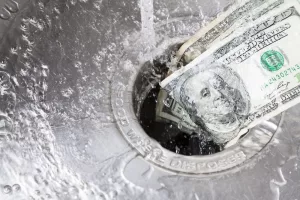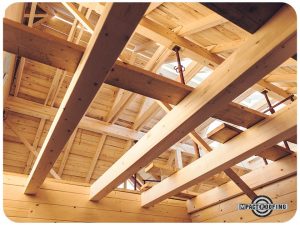Overview of roll roofing installation costs (2025)
Go Back To Previous PageRoll roofing refers to a host of flexible panels adhered to sheathing to protect the home. It is an excellent alternative to the shingles that are often used. That’s because, in a few ways summed up in the relatively low roll roofing installation cost, it is undoubtedly more attractive to people, according to MyHomeQuote. To fully understand why this is the case, a comprehensive examination of this roofing type and its installation process is necessary. This will include how they’re fitted and the general costs. Additionally, let’s evaluate whether this roofing style is worthwhile based on its benefits and drawbacks.
Installation and its costs
The billion-dollar roofing industry features roll roofing, which serves the same primary function as asphalt shingles — to protect you from weather-related damage or elements. What separates them from shingles, outside their general cost, is that they’re especially suited to low slopes of up to 8 percent (2:12).
What separates them from shingles, outside their general cost, is that they’re especially suited to low slopes of up to 8 percent (2:12).
As such, it’s typically meant for non-residential buildings, including:
- Garages
- Storage rooms
- Outhouses
- Gazebos
Main factors influencing the price tag
One of the reasons for the low roll roofing installation price is the relative ease with which it is installed, as well as the lower amount of tools and labor required. This allows more DIY enthusiasts to work on it, thereby reducing costs associated with professional installations.
If this is your roof of choice, be aware that the pricing of it depends on several factors, which are as follows:
The roof-type
The term roll roofing is an umbrella term that encompasses sheets made from multiple materials. Below is a list of some of these, where they land on the price spectrum, and why they’re occupying that space:
Mineral Surface Roll (MSR) Roofing
These are felt saturated with asphalt or fiberglass mats with rock granules on the other side to protect against wind and fire. On this list, they have the lowest price for roll roofing installation. This is because, at a lifespan of 5 to 8 years, it has the lowest durability.
Modified Bitumen Roofing
This variety is much more durable than the previous entry. It blends asphalt with plastic or rubber, which is more durable than felt. This allows it to last up to 25 years, thereby justifying a higher price tag.
Rubber Roofing
Also known as ethylene propylene diene monomer (EPDM), this variety is made of recycled rubber materials. EPDM offers durability comparable to that of bitumen, which makes both more expensive. If you purchase these, please note that the cost is typically quoted per foot or roll. So, it’s worth asking the company you’re dealing with for the actual prices.
The nature of the build
Let’s see how the nature of the installation affects the price. The general roll roofing installation process involves ensuring the surface is smooth, preparing the adhesive, and carefully adding the roll layers per section.
It suffices to say that it is quite a lot of work, which will take an afternoon if you’re motivated. Is this important? Through the installation process, you gain insight into several factors that significantly impact the price. For example, a more extensive roof requires more material, which necessitates additional funds for a well-executed job.
DIY vs. professional help
Additionally, there is a comparison between DIY and professional help (roofing contractors). It goes like this: it’s often more cost-effective to do the job yourself than to hire a professional. However, if you’re going to your route, you’ll have to use rolls, adhesive, a ladder, and everything else needed for installation.
Also, in some cases, it’s not the best idea to go the DIY route, as it’s not as safe, especially in cases where the rolls must be torched on or applied using hot bitumen.
So, if your safety is at risk, is it worth spending more for professional help? Call the right roofing company to replace your roof or consider the right roofing projects.
Is it worth it?
Having taken a general look at roll roofing and its price, the question remains whether you should consider it. This naturally demands that we weigh the good against the bad to gain a fair understanding of things. We begin with the benefits, which are as follows:
- The relatively low price for roll roofing installation encourages DIY installation
- A relatively quick and easy installation process that can last an afternoon
- The various ways in which it can be adhered include torching, hot bitumen, cement, or even self-adhesion
Lifespan
Although roll roofing can be beneficial, certain elements limit its practicality and may deter you. Two in particular are noteworthy, with the first being its limited lifespan. While roll roofing on the high end can last over 25 years, alternatives such as shingles are more durable, with some lasting longer than 30 years, depending on the material used.
The other disadvantage is entirely related to aesthetics. If you look at the low slopes, especially the flat roofs often found on buildings that prioritize functionality over looks, you can see how they serve a practical purpose rather than an aesthetic one. This is where the type falls short, as while it is functional, it isn’t designed to attract attention.
Final thoughts
Roll roofing is the way to go if you’re in your space and trying to maximize costs. Its cost-effectiveness stems from how easily it can be installed compared to other alternatives. If you choose this path, however, understand that the roll roofing installation costs are a minor factor when making the best decision for your situation.
Their lack of curb appeal and relatively low durability limit their use.


